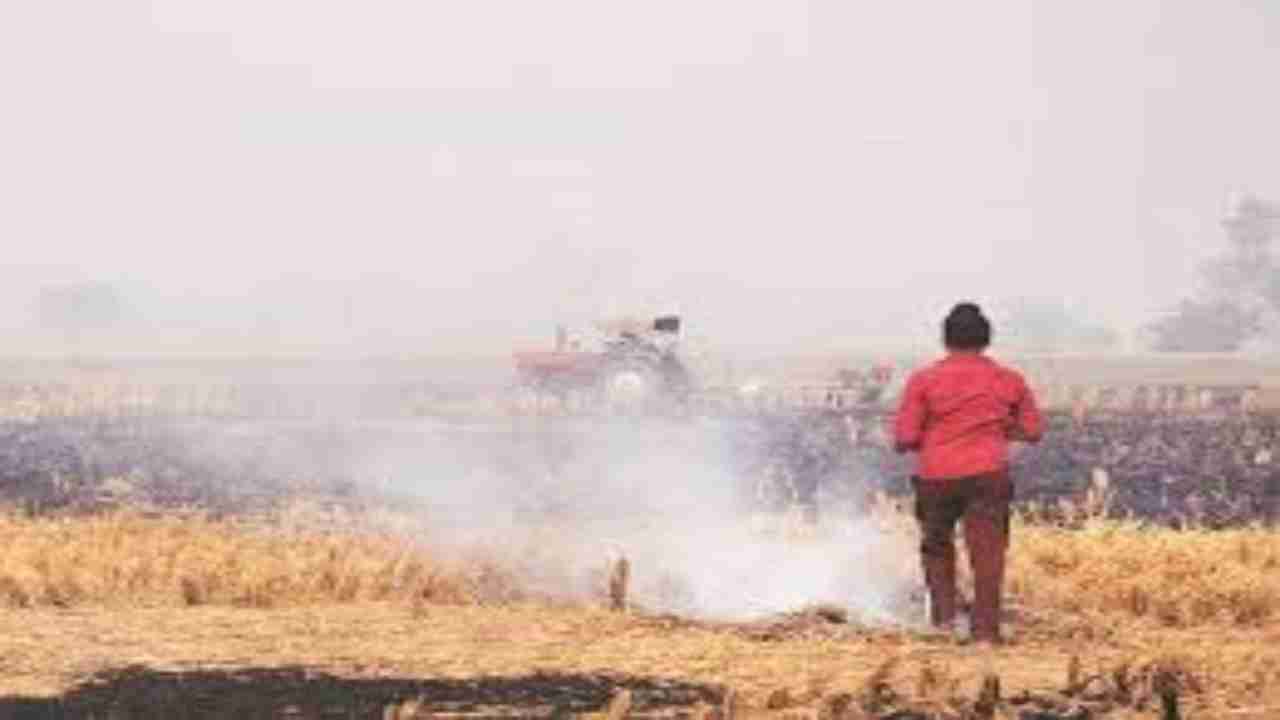New Delhi: Amid the massive spike in air pollution in Delhi and its surroundings, the Central Pollution Control Board (CPCB) on Friday claimed that stubble burning in Punjab, Haryana and other neighbouring regions may not contribute much to city’s deteriorating air quality this year.
The air pollution reaches a peak in Delhi and surrounding regions every winter, when pollution from stubble burning combines with the suspended water droplets in the lower atmosphere to form a thick blanket of noxious smog.
“This time, we are expecting that the peak contribution of the stubble may not coincide with the peak adverse meteorology in Delhi. We may see less contribution of stubble burning in Delhi’s air quality, but it depends on meteorological conditions,” CPCB Member Secretary Prashant Gargava said at a press conference.
By Delhi’s peak adverse meteorology, the official meant the inability of the atmosphere to disperse the pollutants during winters. Due to low wind speed, the pollutants from the local sources such as biomass burning, garbage dumping, unpaved roads, dust, construction and demolition activities do not disperse and hence settle down to form a thick blanket of noxious smog every winter.
Explaining further why stubble burning will have a lower impact this year, Gargava said that as compared to last year, there is currently less area under cultivation for non-basmati crop and stubble burning also started early.
“The burning is currently more as compared to last year. Earlier, the critical situation used to around November second or third week. We believe that, due to this, the stubble burning will not coincide with the peak season.”
Meteorological conditions in Delhi have been extremely unfavorable for dispersion of pollutants since this September as compared to last year, he said, adding that, the PM10 concentration between September 1 and October 14 this year has been more as compared to the corresponding period last year.
Alluding to the source apportionment, the Member Secretary said that most of the pollution hotspots in Delhi are industrial areas, and the main pollutant in these areas is road dust, followed by waste dumping, burning and industrial pollution.
On the brighter side, a marginal improvement in surface wind speed in national capital region has led to improved ventilation and AQI. Delhi’s air quality index was at 238 at 4 p.m. on Friday, which falls in the ‘poor’ category, as against very poor on Thursday.
On Thursday, a war of words broke out between Union Environment Minister Prakash Javadekar and Delhi Chief Minister Arvind Kejriwal over how much crop burning versus local factors like biomass burning, garbage dumping, unpaved roads, dust, construction and demolition activities in Delhi adds to the menace.
Meanwhile, Delhi’s neighboring regions – Gurugram, Ghaziabad, Faridabad, Noida and Greater Noida — also recorded ‘poor’ quality of air. Greater Noida’s air is currently the most polluted amongst all.
Nationwide, as many as three cities have very poor quality of air. Uttar Pradesh’s Muzaffarnagar tops the charts, followed by the state’s Baghpat and Haryana’s Kurukshetra. Maharashtra’s Chandrapur city recorded the cleanest air in the country.
–IANS

















